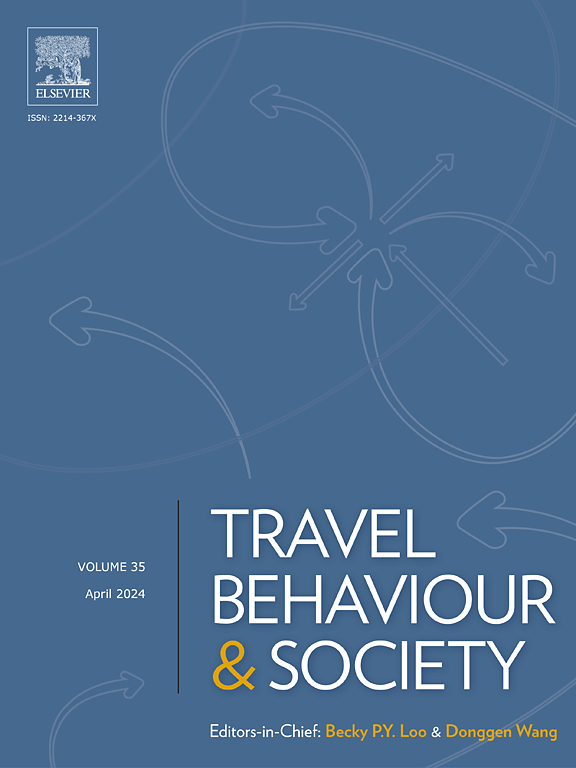Temporal patterns of user acceptance and recommendation of the automated buses
IF 5.1
2区 工程技术
Q1 TRANSPORTATION
引用次数: 0
Abstract
To help automated bus services to be competitive in the market, understanding what factors influence the public’s acceptance and adoption of an automated bus service and how these factors change over time is critical. Various factors affect users’ acceptance of this new bus mode, with the quality of service standing out as a significant consideration. Based on pilot demonstrations, some prior studies have explored the factors influencing the user acceptance of new automated vehicle technology based on real-life riding experience. However, these studies are restricted to predicting the adoption of an automated bus by utilising cross-sectional data, but with no data to explore whether public attitudes and acceptance would change over time. To fill the research gap, a longitudinal survey was conducted. Using the panel data, the present study focuses on users with real-world riding experiences on automated buses operated in a mixed-traffic environment on public roads in Stockholm. Contributing to the longitudinal analysis of the public’s acceptance of automated buses, we develop a novel conceptual model integrating the service quality and the technology acceptance model (TAM). A dynamic structural equation model is employed to explore the changes in judging criteria regarding service adoption among adopters and non-adopters. The findings indicate that comfort and convenience are the most significant determinants of satisfaction and the perception of usefulness, which, in turn, positively affect people’s adoption intentions, as well as encouraging favourable word-of-mouth behaviour. It is expected that the provision of faster, safer, more comfortable and convenient riding experiences with automated buses will eventually increase the use of these buses, as well as improve word-of-mouth communication.
用户接受和推荐自动驾驶巴士的时间模式
为了帮助自动驾驶巴士服务在市场上具有竞争力,了解哪些因素会影响公众对自动驾驶巴士服务的接受和采用,以及这些因素如何随时间推移而变化至关重要。影响用户接受这种新巴士模式的因素有很多,其中服务质量是一个重要的考虑因素。在试点示范的基础上,之前的一些研究根据实际乘车体验探讨了影响用户接受新自动驾驶汽车技术的因素。然而,这些研究仅限于利用横截面数据预测自动驾驶巴士的采用情况,而没有数据探讨公众的态度和接受程度是否会随着时间的推移而发生变化。为了填补这一研究空白,我们开展了一项纵向调查。本研究利用面板数据,重点研究用户在斯德哥尔摩公共道路混合交通环境中乘坐自动驾驶公交车的实际体验。为了对公众对自动驾驶公交车的接受程度进行纵向分析,我们开发了一个新颖的概念模型,将服务质量和技术接受模型(TAM)融为一体。我们采用了一个动态结构方程模型来探讨采用者和非采用者对服务采用的判断标准的变化。研究结果表明,舒适度和便利性是满意度和实用性感知的最重要决定因素,而满意度和实用性感知反过来又会对人们的采用意愿产生积极影响,并鼓励良好的口碑行为。预计自动驾驶公交车提供的更快、更安全、更舒适、更方便的乘车体验最终将提高这些公交车的使用率,并改善口碑传播。
本文章由计算机程序翻译,如有差异,请以英文原文为准。
求助全文
约1分钟内获得全文
求助全文
来源期刊

Travel Behaviour and Society
TRANSPORTATION-
CiteScore
9.80
自引率
7.70%
发文量
109
期刊介绍:
Travel Behaviour and Society is an interdisciplinary journal publishing high-quality original papers which report leading edge research in theories, methodologies and applications concerning transportation issues and challenges which involve the social and spatial dimensions. In particular, it provides a discussion forum for major research in travel behaviour, transportation infrastructure, transportation and environmental issues, mobility and social sustainability, transportation geographic information systems (TGIS), transportation and quality of life, transportation data collection and analysis, etc.
 求助内容:
求助内容: 应助结果提醒方式:
应助结果提醒方式:


